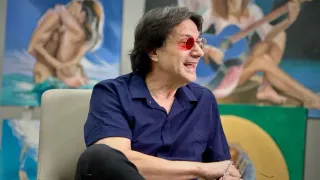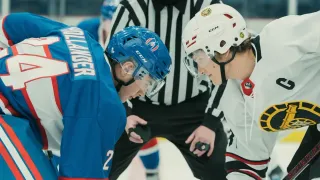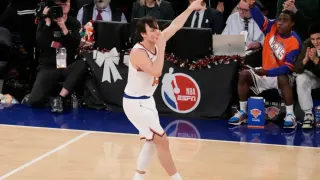January 10, 2024
Who Was Burt Reynolds? New Doc Looks Inside the Life of the 1970s Hollywood Hunk
Steve Duffy READ TIME: 11 MIN.
Documentarian Adam Buitenhuis speaks to EDGE about the latest film in his series that looks at the lives of famous Hollywood notables. With "I Am Burt Reynolds," he looks into the life of the 1970s hunky superstar.
Adrian Buitenhuis is one of the most prolific documentarians around. He has worked for such outlets as Sony Pictures, CBS and Vice Media among others. With Network Entertainment, he has directed documentaries on Pablo Escobar and b Suge Knight as part of the seven-part series, "Facing," for National Geographic.
But one of his most interesting ongoing projects is his series on the lives of celebrities that began in 2017 with "I Am Keith Ledger." He followed that with ones on Sam Kinison, Paul Walker, Patrick Swayze, and Canadian music legend Anne Murray. Recently the latest in his "I Am..." series focuses on Hollywood icon Burt Reynolds. His film, "I Am Burt Reynolds" is currently streaming on the CW and is available on Apple TV.
In the 1970s, there was no bigger male movie star than Reynolds, the hunky actor who was a natural to star in television Westerns and action films in the 1960s. With his breakout role in "Deliverance" in 1972, a grueling film in which he played an outsdoorsman leading a group of friends on a canoeing trip through the Georgia wilderness. Also that year he became a national sensation by posing nude in Cosmopolitan Magazine. He later said he did the photo shoot "as a kick" and because he had "a strange sense of humor." But he later regretted it. Nonetheless, at the 1972 Oscars, he was the most joked about Hollywood celebrity.
That decade was Reynolds' golden period by pivoting between rural (meaning Southern) comedies ("Smokey and the Bandit") and more sophisticated fare ("Semi-Tough," "Starting Over"). His private life, which included a relationships with singer Dinah Shore and Sally Field. His first marriage to British actress Judy Carne ("Laugh-In") ended in divorce. He went on to marry actress Loni Anderson from 1988 to 1994, with whom he adopted a son.
They both proved to be important contributors to Buitenhuis's film, which follows his his early career highs, subsequent decline and resurgence late in his life. This included a celebrated role in "Once Upon a Time in Hollywood" and "The Last Movie Star," a 2017 film in which he played a not-so-disguised version of himself. Reynolds died of a heart attack the following year at the age of 82.
EDGE spoke to Buitenhuis about the appeal of Burt Reynolds as a subject, what he learned about his off-screen life, and how that Cosmopolitan centerfold impacted his career.
EDGE: Why Burt Reynolds?
Adrian Buitenhuis: I think he's such an icon. The fact that there'd never been an official documentary about his life surprised me. I think he's one of the last true movie stars. His career went back to the studio system and for him to be still making films into the new Hollywood era and to be in Boogie Nights is amazing. To make a film about him was tracking the history of Hollywood, which was pretty amazing. The interviews that we got and to be able to talk to his friends, family, and colleagues were incredible. I can't think of many who lived into this era who saw as much and did as much as he did in Hollywood.
EDGE: The celebrity interviews of Burt's colleagues and friends are impressive. Do you have a favorite?
Adrian Buitenhuis: Oh, that's tough. Everyone was so special. For me, as a filmmaker, being able to talk with Peter Bogdanovich was special. Bruce Dern, we could have made a miniseries with the amount of material that he shared. It was fun to turn him on and watch him go. Some of the stories were amazing and what an incredible memory he has. The stuff that he remembered.
Having the opportunity to spend quite a bit of time with Loni Anderson and her son, Quinton Reynolds was important. They have been super supportive through this process. They not only were interviewed in the film, but they also gave us a lot of material – never-before-seen photographs and home videos. I was there with Loni when a bust was presented at the Hollywood Forever Cemetery, and we screened the film in Hollywood. This has been an ongoing relationship. Also, Nancy Lee Hess, his niece, opened the doors to Burt's house for us.
We shot quite a bit of the film in Burt's House, which was pretty special. Marilu Henner also has a photographic memory, so her stories were great. Another amazing interview, Joe Namath. It's hard to pick a winner. I think we did a pretty good job of curating the cast and I love the way everyone brought something different and special from their experience with Burt. He was a magical person who impacted a lot of people, not only on a global scale but in a personal way as well.






